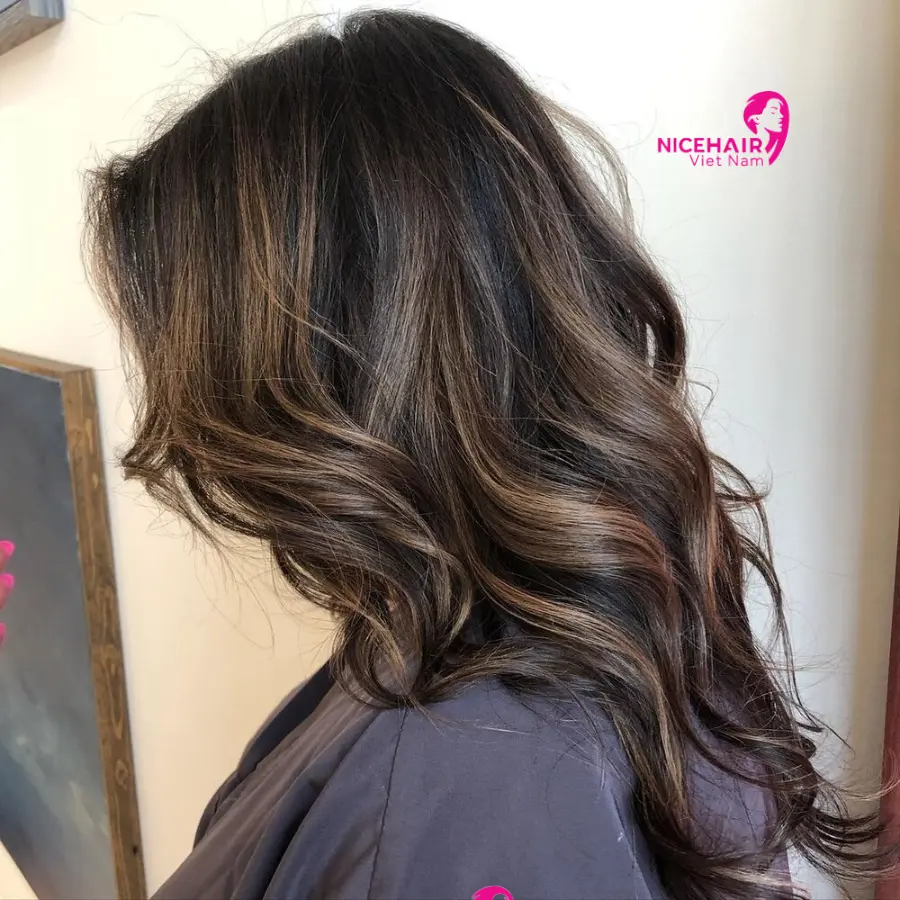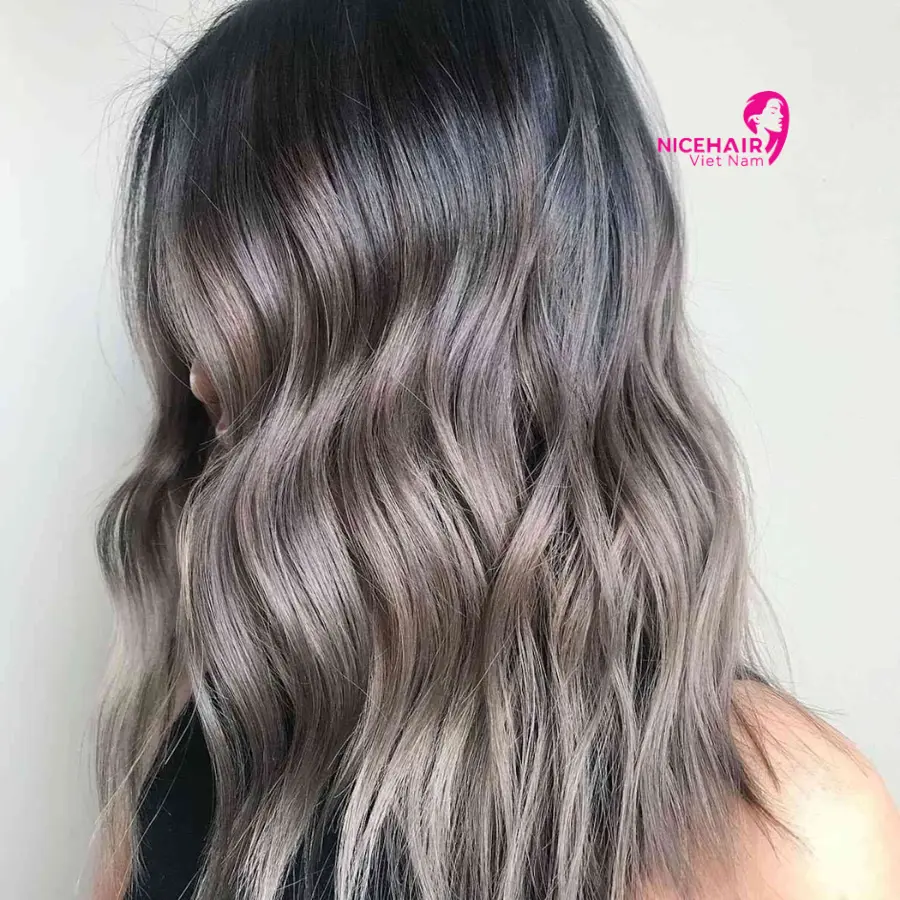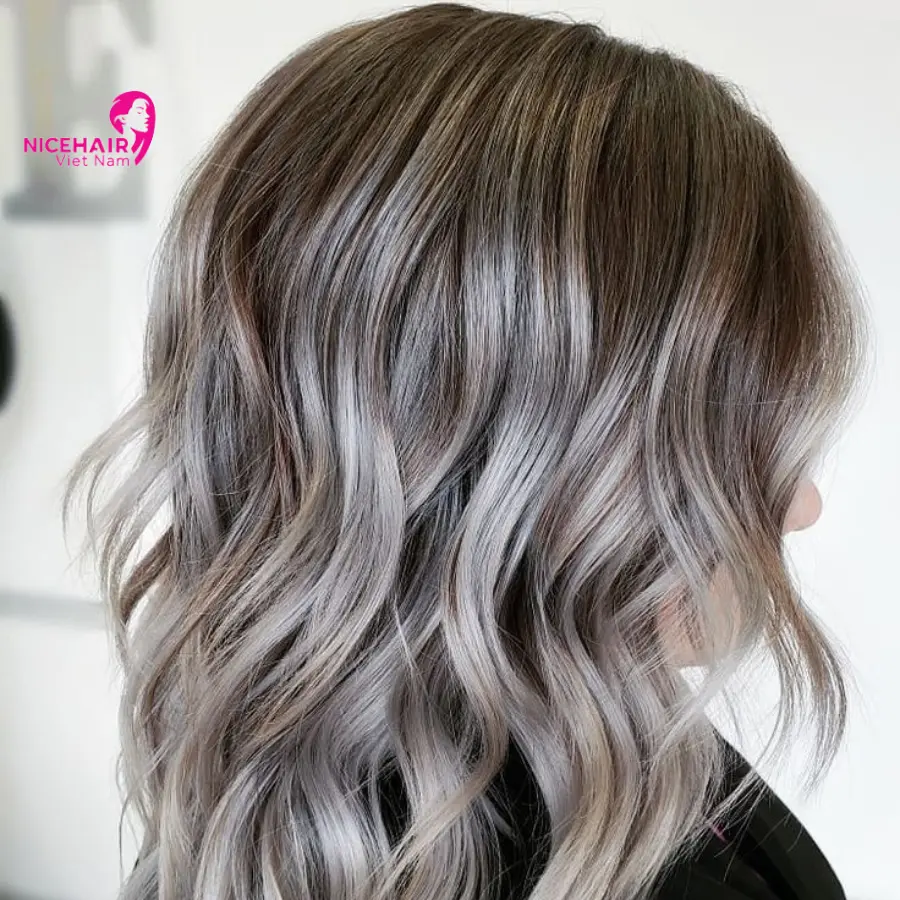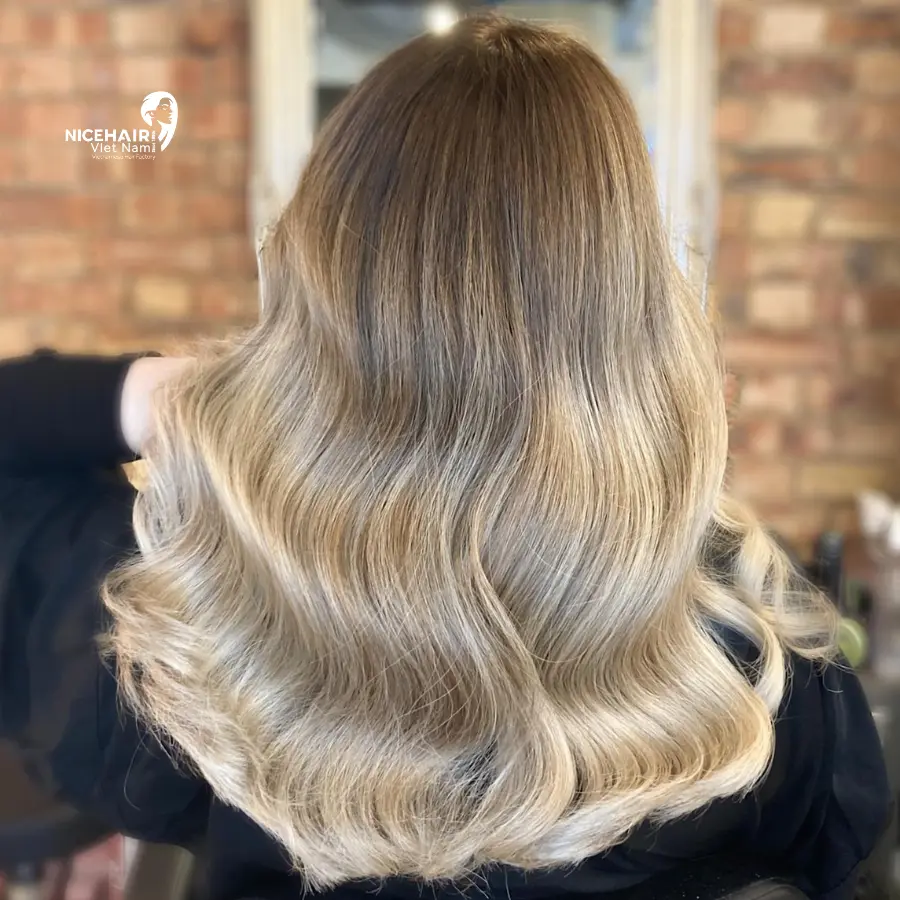The term “balayage” originates from the French language, where it translates to “sweeping” or “painting.” To achieve a more natural look, the technique involves skillfully painting the balayage hair onto the strands.
Balayage hair facts you may not know
Balayage hair has emerged as one of the most highly sought-after services in hair salons. Although its popularity has recently surged, the technique has existed for some time. However, it is only in recent years that modern hair salons have started incorporating it into their offerings. With extensive practice and refinement, hair stylists have become masters of the balayage technique.
Their expertise and skill with balayage have made them renowned in the industry. The exquisite, sun-kissed hair colors displayed by supermodels and celebrities have further cemented the staying power of balayage hair.
If you’re curious about what exactly balayage hair entails, whether it can be attempted at home, or how to select a qualified hairdresser for the job, rest assured that we have answers to all these queries and more.
Learn all about balayage
Here are some intriguing facts about Balayage hair that you might not know
Just what is balayage?
Just what is balayage? Balayage is a hair coloring technique that involves hand-painting color onto the hair to create a natural, blended, and sun-kissed effect. The word “balayage” itself comes from the French term meaning “to sweep” or “to paint.” Unlike traditional highlighting methods that use foils or caps, balayage is achieved by applying color or lightener in a sweeping motion, focusing on the surface and mid-lengths of the hair. The color is strategically placed to mimic the way the sun naturally lightens the hair, resulting in soft, subtle, and seamless transitions between shades. Balayage can be customized to suit different hair colors, textures, and personal preferences, making it a versatile and popular choice among those seeking a natural-looking and low-maintenance hair color.
- Balayage is an artistic technique rather than a specific look or style, emphasizing the artistry behind its application.
- Compared to traditional highlighting methods, balayage tends to be pricier due to the intricacy and skill involved in hand-painting the color.
- The results of balayage are known to have a longer lifespan compared to traditional highlights, allowing for less frequent touch-ups.
- Balayage typically does not provide significant lightening or lift, often resulting in a hint of warmth remaining in the hair.
- Recognized as one of the most subtle highlighting techniques, balayage aims for a natural and seamlessly blended outcome.
- The haircut you have plays a significant role in shaping the final appearance of your balayage, contributing to the overall effect.
- The appearance of balayage can vary depending on the hair’s texture, appearing distinct on curly hair compared to straight hair.
Balayage is a technique

Balayage, as a hair coloring technique, distinguishes itself from specific styles or looks it creates. Rooted in its French origins, “balayage” translates to “sweep” or “paint,” accurately reflecting the method employed by hairstylists when applying the clay lightener.
A genuine balayage involves the application of color using a brush, without the use of foils. While some stylists may utilize cotton, mesh, or plastic wrap to neatly separate the hair sections, foils or caps are never employed in true balayage. In most cases, the hair is processed in an open-air environment.
It’s important to note that there are various approaches to achieving the desired result. If your stylist chooses to incorporate foils instead of following a strict balayage technique, it’s crucial to trust their professional judgment. There may be instances where balayage is suitable for your hair’s current condition, but in other cases, alternative techniques may be better suited to achieve your desired hair goals.
Balayage is more expensive than traditional highlights
Balayage typically carries a higher price tag compared to traditional highlights due to its customizable nature. The artistic skill required in hand-painting the color onto the hair adds to the cost. Each section of hair is carefully selected, and precise placement is crucial, demanding a high level of skill to execute correctly.
Furthermore, the processing time for balayage is often longer than that of traditional foil highlights, and in the salon industry, time is money. The intricate application process and the need for meticulous attention to detail contribute to the extended processing time.
In addition to the labor involved, the lighteners used in balayage, often clay-based lighteners, tend to be more expensive than traditional bleach. The cost of these specialized lighting products adds to the overall expense of a balayage service.
Considering the craftsmanship, time commitment, and cost of materials, it’s understandable why balayage is generally priced higher than traditional highlighting techniques. The investment reflects the expertise of the stylist and the desired customized, natural-looking results that balayage offers.
Balayage will last longer than traditional highlights
Balayage often carries a higher price tag compared to traditional highlights due to its high level of customization. The technique requires more artistic skill as the stylist meticulously hand-paints the color onto the hair. Each section is carefully selected, and precise placement is crucial to achieve the desired result. This level of precision and attention to detail demands a higher level of skill, contributing to the increased cost.
Another factor that contributes to the higher cost of balayage is the longer processing time compared to traditional foil highlights. Balayage requires a more gradual and meticulous approach, which takes additional time in the salon. In the salon industry, time is valuable, and the extended processing time of balayage translates to a higher price.
Additionally, the lighteners used in balayage, often clay-based lighteners, tend to be more expensive than traditional bleach. These specialized lighteners are designed to achieve the desired blended and natural look of balayage but come at a higher cost.
Considering the level of artistry, the time invested, and the cost of materials, it is understandable why balayage is generally priced higher than traditional highlighting techniques. The price reflects the expertise and skill required to create a personalized and natural-looking color result with balayage.
Balayage does not produce as much lift as regular highlights
Balayage may not be the most suitable technique for achieving significant contrast or eliminating warmth in naturally dark or previously color-treated hair.
Unlike traditional highlighting techniques that use foils, balayage relies on a slower processing rate, resulting in less lift. This characteristic contributes to the more natural and blended appearance that balayage is known for. Foils, acting as heat insulators, accelerate and enhance the lifting power of the lightener, similar to baking a potato.
Balayage is most effective on natural or virgin hair as it typically lifts more easily compared to hair that has been previously colored. However, if you desire the “balayage look” with higher levels of lift to counteract warmth and brassy tones, your stylist may employ a foliage technique. This technique combines the balayage aesthetic with foils and traditional lighteners to achieve greater lift.
Foilayage replicates the balayage look while incorporating the use of foils. It can be done using a teasing technique to create a softer transition at the roots, commonly known as “teasy lights.” This method allows for a controlled lift and precise color placement, providing the desired balayage effect with increased lifting power.
Ultimately, the choice between balayage, foliage, or other highlighting techniques depends on your hair’s starting color, desired level of lift, and your stylist’s expertise in determining the best approach to achieve your desired outcome.
Balayage is usually subtle

Balayage is renowned for its ability to create a subtle and natural-looking result. Unlike traditional highlighting techniques, the color application in balayage is not saturated on every strand of hair. Instead, the color is carefully painted onto the outer layers, allowing for a dimensional and sun-kissed effect.
The emphasis on subtlety in balayage means that if you are seeking a high contrast or bold look, this technique may not be the most suitable choice for you. Balayage excels in creating a soft and blended appearance rather than dramatic color contrasts.
It’s important to note that balayage may not be the ideal option if you desire cooler tones and want to eliminate any warmth in your hair. Due to its limited lifting power compared to traditional highlights, balayage tends to retain some warmth in the final result, even after toning. If you prefer a completely cool-toned outcome without any warmth, alternative techniques might be more suitable for your preferences.
Understanding the inherent subtlety of balayage and its ability to achieve a natural, sun-kissed look is essential in determining whether it aligns with your desired hair color goals. Consulting with a professional stylist can provide valuable guidance and help you make an informed decision about the best technique for your specific needs.
Balayage and haircuts
The shape and style of your haircut play a vital role in determining how the balayage is placed. Balayage is an excellent technique for enhancing a haircut, but it is important to ensure that both elements work harmoniously together. The presence of layers in the haircut can significantly impact the overall look of the balayage, either enhancing or detracting from it.
To achieve the best results, it is often recommended to establish the framework of the haircut before applying the balayage. This allows for more precise placement and customization of the color. Once the balayage is complete, the stylist can then proceed with finishing touches and texturizing to perfect the overall look.
It is worth mentioning that balayage can be done on both long and short hair. The length of your hair is not a limiting factor as long as the placement of the balayage is tailored to complement the shape and style of your specific haircut. The key is to ensure that the balayage is customized to suit the unique characteristics of your hair and haircut, regardless of length.
Discussing your haircut preferences and collaborating with your stylist can achieve a cohesive and complementary look where the balayage enhances and harmonizes with the chosen haircut.
Where is the origin of balayage?
Where is the origin of balayage? The origin of balayage can be traced back to France. Balayage is a French word that means “sweeping” or “painting” in English. It was first developed in the 1970s by French hair colorists who sought a more natural and sun-kissed look for their client’s hair. The technique involves hand-painting highlights onto the hair, focusing on the mid-lengths and ends, to create a seamless and blended effect. Balayage has since gained popularity worldwide and has become a sought-after hair coloring technique in salons across the globe.

The origins of balayage can be traced back to the ultra-exclusive Carita Salon in Paris during the 1970s, where this glamorous hair coloring technique was born. In an era when the standard approach to hair coloring involved the use of icing caps and foils, the introduction of balayage brought a revolution to the hair industry.
At the forefront of this innovative technique were the Carita sisters, Rosy and Maria, who sought to create a more natural and effortlessly beautiful look for their clients. Balayage, which means “sweeping” or “painting” in French, perfectly captured their vision.
Rather than using traditional methods that required sectioning the hair and applying color all over, balayage involved a more artistic and freehand approach. The process entailed using cotton strips to separate the colored hair from the uncolored hair, creating a beautiful contrast that mimicked the effects of sun-kissed highlights.
While balayage gained popularity in Paris, it took some time for this revolutionary technique to cross the Atlantic and make its way to the United States. It wasn’t until the 1990s that balayage started to gain widespread acceptance among American hairstylists and clients.
Since then, balayage has become a staple in the world of hair coloring, coveted by individuals seeking a natural, low-maintenance, and sun-drenched look. Its popularity has soared in recent years, with many celebrities and influencers sporting this effortlessly chic style. Today, balayage can be found in salons worldwide, offering a versatile and customizable approach to hair color that continues to captivate and inspire.
What makes highlights and balayage different from one another?
Highlights and balayage are both hair coloring techniques that add dimension and depth to the hair. However, there are distinct differences between the two.
Highlights: Highlights involve sectioning the hair and applying color uniformly from root to tip. Foils or caps are often used to isolate the strands being colored. The goal is to create a consistent and noticeable contrast between the colored strands and the natural hair color. Highlights typically result in a more uniform and structured look, with clear lines of demarcation between the colored and natural hair.
Balayage: Balayage, on the other hand, is a freehand technique that involves painting or sweeping color onto the hair. Instead of applying color from root to tip, the colorist strategically places the color on selected strands, focusing on the mid-lengths and ends. This technique creates a softer, more natural look, as the color blends seamlessly with the natural hair color. Balayage allows for a more graduated and sun-kissed effect as if the hair has been naturally lightened by the sun over time. Unlike highlights, balayage does not typically involve the use of foils or caps.
The main difference between highlights and balayage lies in the application method and the effect. Highlights provide a more defined and noticeable contrast, while balayage offers a more blended and natural-looking result. Balayage also tends to require less maintenance and allows for a softer regrowth line, as the color is not applied directly to the roots.
Both techniques have their unique benefits and can be customized to suit individual preferences and hair types. It’s important to consult with a professional hairstylist to determine which technique is best suited to achieve the desired look and compliment your natural hair color.
What distinguishes ombré and balayage hairstyles?
When it comes to hair coloring techniques, two popular options that often come up in conversation are ombré and balayage. While they may share some similarities, there are distinct characteristics that set them apart.
Let’s start with ombré. The term “ombré” originates from the French word meaning “shadow,” and it refers to a hair dyeing method that involves a gradual transition from dark to light. In an ombré hairstyle, the hair is typically darker at the roots and gradually becomes lighter towards the mid-shaft and ends. The purpose of this technique is to create a look reminiscent of hair that has been dipped in color. The contrast between the dark roots and the lighter ends adds a striking visual effect. Ombré hairstyles often aim to achieve a bold and noticeable gradient in hair color.
On the other hand, balayage is a technique that revolves around painting or sweeping color onto the hair to create a more natural and blended effect. As mentioned before, “balayage” translates to “sweeping” in French. During a balayage process, the color is applied by hand using a freehand painting technique. Small, triangular sections of hair are selected, and the color is carefully brushed onto them using a board or foil. The result is a seamless integration of the highlights with your natural hair color, without any distinct lines or demarcations. Balayage aims to achieve a sun-kissed, effortless look with soft transitions between shades.
One key distinction between the two techniques is the way the color is applied. With ombré, the color change is more dramatic and typically more noticeable. The focus is on creating a clear contrast between the darker roots and the lighter ends. Balayage, on the other hand, focuses on a more subtle and natural-looking result. The color is strategically painted onto the hair, blending with your natural color and creating a seamless and harmonious effect.
Additionally, balayage often incorporates leaving some darker sections at the bottom of the hair to add depth and texture. This further contributes to the organic and multidimensional appearance of balayage hairstyles. Due to the blended and natural transition, balayage hair tends to require less maintenance and upkeep compared to ombré.
Ultimately, the choice between ombré and balayage depends on your desired look and personal preferences. Whether you’re seeking a bold and noticeable gradient or a soft and natural blend, both techniques offer unique and stunning results. Consulting with a professional hairstylist can help determine which technique best suits your hair type, desired outcome, and overall style goals.
Does balayage suit you?

Whether balayage suits you or not depends on various factors, including your desired change, personal style, and hair type. Balayage offers a wide range of creative possibilities, allowing you to decide how subtle or dramatic you want your hair transformation to be.
If you have never colored your hair before, balayage can be a more moderate and gentle introduction to hair coloring. It provides a natural and blended effect, making it a versatile choice for those who want to enhance their hair without a drastic change.
It’s also important to consider your typical hairstyle and overall aesthetic. Balayage tends to look stunning with beachy, wavy waves as it adds depth and dimension to the textured hair. On the other hand, straight hair or a strong bob can showcase more pronounced color blocking with balayage.
Before making a decision, it’s recommended to consult with a professional hair colorist. They can provide expert advice based on your hair type, face shape, and lifestyle. They will help you determine whether balayage is the right choice for you or if there are alternative techniques that may better suit your needs and preferences.
Ultimately, the goal is to choose a hair color technique that aligns with your style, enhances your features, and fits seamlessly into your lifestyle. Discussing your options with a professional will ensure that you make an informed decision that will leave you feeling confident and satisfied with the results.
Conclusion
In conclusion, if you’re looking to refresh your look, consider experimenting with Balayage hair. It’s a hairstyle that can help you stand out and add a touch of uniqueness to your appearance. If you would like more information or have any questions about hair, feel free to reach out to us directly through our website. We’ll be happy to assist you further. Looking for more hair-related articles on nicehairvietnam.net
Contact us
- Website: nicehairvietnam.com
- Whatsapp: (+84) 846009647
- Email: hakan@nicehairvietnam.com
- Factory address: Factory No1, Dong Tho’s Street Zone, Yen Phong Dist., Bac Ninh Province, Vietnam.
- Office: No.25 Tho Thap Ward, Dich Vong Hau Ward, Cau Giay District, Hanoi City, Viet Nam.

